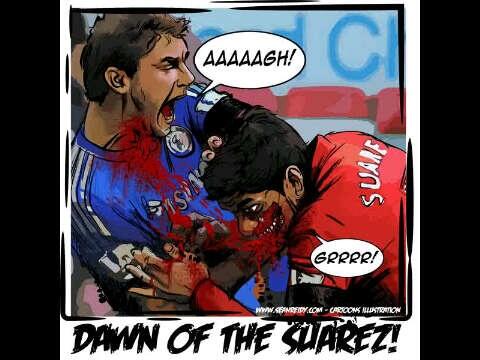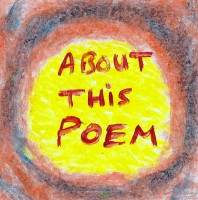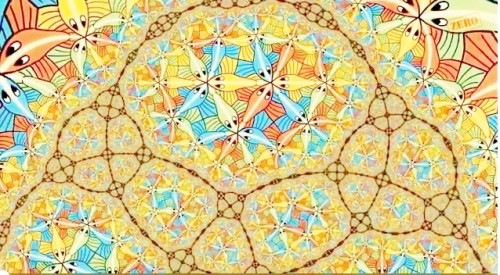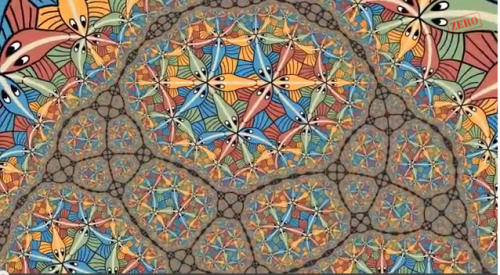Rauan Klassnik
http://rauanklassnik.blogspot.com
author of three collections: Sky Rat (Spork, 2014), The Moon's Jaw (Black Ocean, 2013) and Holy Land (Black Ocean, 2008) ... ----- @klassnik ------
http://rauanklassnik.blogspot.com
author of three collections: Sky Rat (Spork, 2014), The Moon's Jaw (Black Ocean, 2013) and Holy Land (Black Ocean, 2008) ... ----- @klassnik ------

So, I’ve been quite preoccupied with this great essay on True Detective by Gary J Shipley which can be found at Bright Lights Film Journal. The essay, it turns out, is a wonderful, thorough and haunting meditation on the (trapped, locked-room) human condition, conciousness, pessimism, etc, etc:
Cosmic pessimism is the refuge of the pessimist who still finds himself alive, the refuge of a futility he has not made his, the refuge of the mystery of his not knowing and the vanity of trying, and he finds claiming this impossibility, the externally codified nature of his predicament, to be less taxing than any weariness of knowing. For to remain is not to make the world and its secrets yours via the self you have first established as other, but rather to make the self the potential agent of its own redemptive ignorance via the otherness of what’s outside it. Hart diagnoses this condition in Cohle, tells him his denial lies in being “incapable of admitting doubt,” and so articulates how salvation lies not in the flimsy panoply of faith but in acknowledgment of what is not known, for Hart like Cioran knows that “doubt is less intense, less consuming, than despair.” And while, as Eugene Thacker explains, horror and our philosophical interest in the world around us may well be intertwined, both being concerned with “the paradoxical thought of the unthinkable, in so far as it deals with this limit of thought, [ … and] in so far as it evokes the world-without-us as a limit,” pessimism somewhat counter-intuitively becomes the antidote to this horror, and cosmic pessimism the antidote to Lovecraftian/Thackerian cosmic horror: in the case of the pessimist the horror of unthinkability is transformed into a salve, a place of solace for thinking that cannot escape itself, a perspective smeared with the excrement of that which being must always become.
again, to read the full essay click here
Gobbet’s dangerous and exenterating Pussy Guerilla Face Banana Fuck Nut by RC Miller is now available
Gobbet exclaims that Pussy Guerilla Face Banana Fuck Nut is all of those things. But mostly it’s a book sticky with Frederick Seidel’s wet dreams. It will burn your mouth and it will tickle the hymen you framed on your wall so it never got broke. These poems never believed in anything but the gruesomeness of the casualness of their nonbelief. These poems are shrinking pockets of mummified hope. They are what beauty becomes in the ‘Fuck You’ stare. They are the grace of dying slowly with your head in the shitter, your arse in the air, and the soul of God in your masturbator’s hand
Also, check out a beautiful and hard-prophetic poem of RC’s that’s just now gone live at Paragraphiti.
xoxoxoxoxoxoxoxooxoxoxoxoxox
I recently read at an event organized by Peter Jurmu which took place at John Wawrzaszek’s Chicago Publishers Resource Center
I chatted with John a bit before the reading and then asked him to send me a bit more info about the center:
Chicago Publishers Resource Center is a new community space in Chicago that focuses on literary and artistic projects. On Independence Day weekend, CHIPRC will celebrate its first anniversary!
We’re fortunate in that Chicago has such a diverse and thriving publishing community, including a large self-publishing scene from indie comics to zines. There are multiple writing programs in area colleges and universities. It’s funny how everyone is so compartmentalized – people don’t realize the resources at their fingertips. There is not a dedicated space where all these communities can connect. The center is a community space that welcomes everyone looking for a place to meet others, learn a new skill, or simply to get to work.
The name is an homage to the IPRC in Portland, a wonderful resource to artists in that area. I took to focusing on the word publishing, allowing the community to define it as widely as possible. In the digital age, society is writing more than any other time in history. Programming has to include not only print, but digital media; it has to include film, music, theater, and comedy. It has to honor graphic storytelling in comics, animation, shadow puppetry, and design. Writing is not only influenced by all these forms, it is at their center.
CHIPRC’s programming focus has been balanced between craft and projects. The idea of learning, honing, or improving a skill is important to establish a basis for implementation. In the first year, there have been workshops, discussions, meetings, readings, film screenings, work days and more. The ideas come from the community and are led by those in the community.
In the next year, I look to strengthening community partnerships and expand the types of programming offered. It’s been great so far.
So, if you’re wanting to host a reading, lead a workshop (how to make books, get published, do collages, etc, etc), or to find out about upcoming events, then please contact John at chicagoprc(at)gmail(dot)com.

Biting is despicable, of course.
But how many writers, in the throes of creation, wrastling that dark angel, have resorted to biting?? Have chomped down on the Muse’s neck or shoulder??
Or perhaps the Muse is the biter, spurring us on to inspired action?????
(and, note: it’s ok to be a Creative First Responder in a World Cup biting incident. But not in a shooting tragedy. . . . . .O, where do we draw the line ??? . . . . O, poor Luis… O, poor Seth)

Colum McCann — Transatlantic
……….what was Colum McCann, National Book Award Winner, thinking when he posed for this author pic ??
“I am profound. I am sooooo profound.” — ??
“This is sure gonna sell a lot of copies!!!” — ???
“I have been translated into 35 languages!!” —??
“What would James Joyce say about this???” — ?
“Is this really a good idea??” —- ????
“The scarf’s the clincher!!” —- ????
______________________________ ???????
(Persona Peep Show by Sara Tuss Efrik and Mark Efrik Hammarberg)
**********
Over at Montevidayo James Pate wrote the following about Persona Peep Show:
Persona Peep Show is an incredibly visceral work, and, as such, I can imagine it making some parts of the American poetry scene uncomfortable. It’s easy to imagine the standard criticisms: it’s too grotesque, too image-based, it’s too pleasurable (in a funhouse sort of way), it doesn’t properly “critique” or distance itself from XYZ. Its use of fairytale is anachronistic, and therefore conservative (God forbid we should ever disturb the laws of Hegelian-inflected historical linearity). And yet this video makes such criticisms seem old-fashioned and academic. As I’ve written about before on Montevidayo, there is a strong contemporary tradition in the art scene of masquerade, theatricality, excess, color. Jack Smith, Cindy Sherman, Matthew Barney, Ryan Trecartin. And a film like Persona Peep Show is very much related to that sensibility.
And in the comments section of that post Johannes Göransson adds:
Just the mere move of poetry into the video image is already a challenge to a US poetry which for so long has seen itself as inherently ethical precisely in opposition to the spectacularity of film, video etc.
**********
In an earlier Monteviday post–Adventures with weird rabbits and dismemberments: Sara Tuss Efrik’s deformation zone-–Göransson described Efrik’s work (written and video) as an investigation of “wound culture” and found one of her “Automanias” to be “a constant tension between the many and the singular, the diary-narrative and the forces that break apart the body.”
It’s not hard to see that “too much” dismemberment, “too much” of weird rabbits, etc, would make a conservative and old-fashioned Poetry Community uncomfortable but I’m particularly struck by Göransson’s contention that the “the mere move of poetry into the video image” would create some discomfort in the same stodgy circles that view themselves as “inherently ethical in opposition to the spectacularity of film, video etc.”
Perhaps since Art and Ethics have been on my mind a bit lately (see my recent Abramson Debacle post as well as its comment thread) I’m tickled here, particularly, by the the sense of righteousness at play. The sense of a moral superiority.
********
But are these Automanias and Videos too much for American Poetry Circles ?? Some of them ?? Most of them ??
**********
The new ACTION YES contains two more Efrik videos and you can check out some of the Automanias here in an earlier issue.
“Shot and edited by poet and photographer Rachel Eliza Griffiths, P.O.P is a video series featuring contemporary American poets who read both an original poem and a poem by another poet, after which they reflect on their choice. They then answer a question contributed anonymously by a poet in the series, and leave their own question for another to answer. What results is an evolving, multifaceted conversation among poets about the art form.
In 2014, the Academy of American Poets partnered with Griffiths to release the P.O.P video series throughout the year on Poets.org“
In the Los Angeles Review of Books’ online Marginalia Christopher Kempf breaks, I guess, some new ground on the Abramson Debacle (ie, about Seth Abramson’s 14-hour poem, Last Words for Elliot Rodger):
1) The main thrust of Kempf’s essay (borne out of looking at and discussing Abramson’s poem “as poetry, as an aesthetic work demanding, as all serious art does, the careful critical attention that lies at the heart of the literary discipline”) is that poems should be written in response to tragedy but “they need to be written well.”
2) Kempf completely dismisses Diamond’s Flavorwire post because it “ultimately prohibits any aesthetic response at all to tragedy.” He is, on the other hand, more sympathetic to Laura Sims’ VIDA article because she “explore(s) in necessary ways the relationship between art and violence, helping advance the conversation about how writers can ethically and effectively engage with tragedy” but is concerned hers is “a rather conservative position with respect to art and culture” and that “(her) remarks perhaps too closely police, at least for (his) taste, who can and cannot write about violence and how.”
With “Leo’s Playtime Invocation” I set out to capture the mounting tension I see in Leo every time I squeak his ball. His movement and barks grow more urgent with every squeak and every playtime seems to set us into a trance of tease, throw, capture, and retrieve. Moondog’s composition entitled “Invocation” lends itself to creating a compound mimicry of a rising ‘Shepard’s Tone‘ with video clips whose motion and content form a sort of visual poetic line or set of refrains. My voice and poem adds my own temporary psychosis. As I talk to Leo, I notice he pays me no heed. I’m but a needle and plunger to his heroin.
in Leo every time I squeak his ball. His movement and barks grow more urgent with every squeak and every playtime seems to set us into a trance of tease, throw, capture, and retrieve. Moondog’s composition entitled “Invocation” lends itself to creating a compound mimicry of a rising ‘Shepard’s Tone‘ with video clips whose motion and content form a sort of visual poetic line or set of refrains. My voice and poem adds my own temporary psychosis. As I talk to Leo, I notice he pays me no heed. I’m but a needle and plunger to his heroin.



Nathan Curtis Warner is an unpublished writer curating the performance series LYE:SITUATIONS and the reading series LYE:WORDS in Portland, OR.